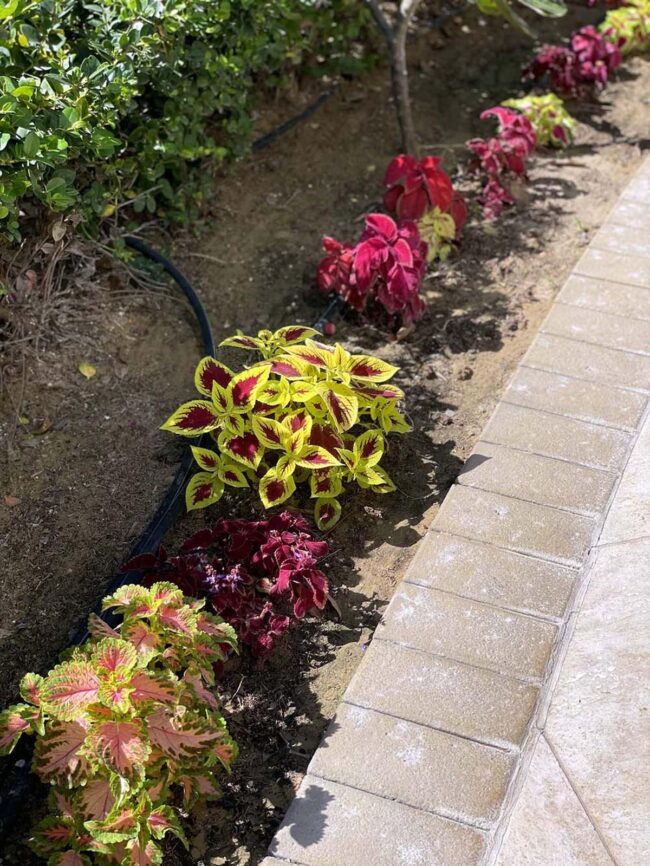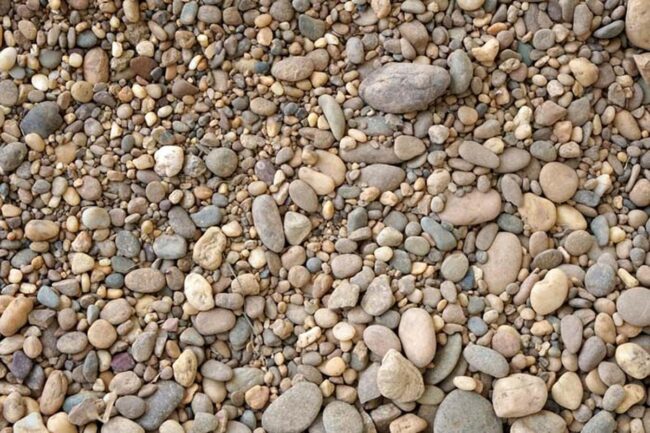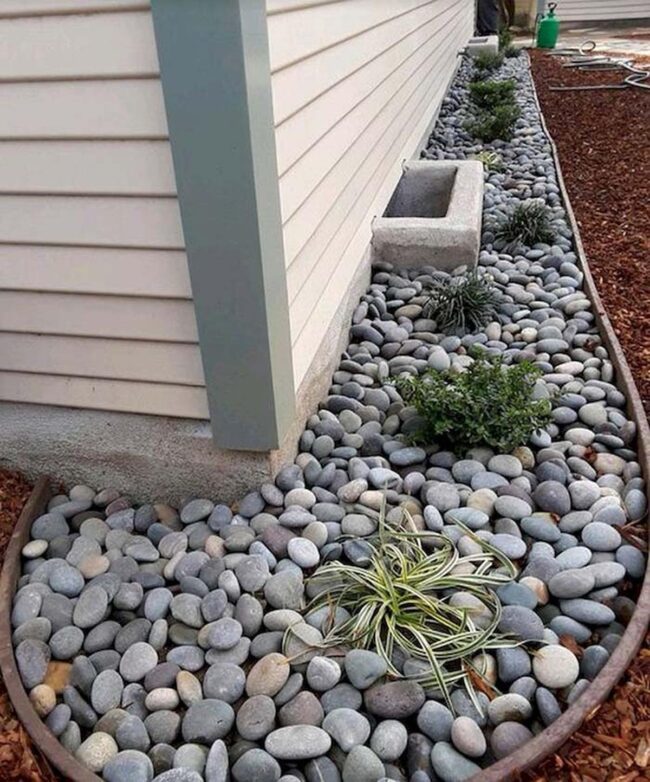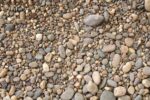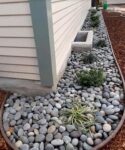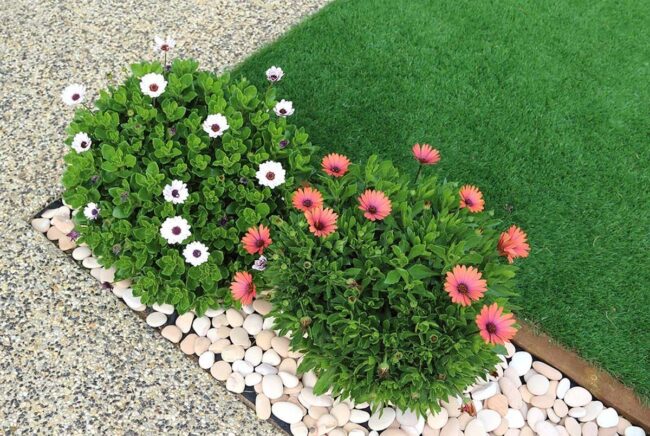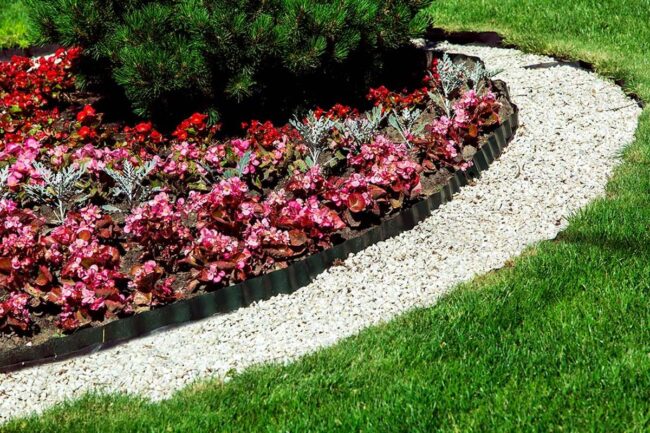7 Types of Garden Edging Stones: All You Need to Know
Types of garden edging stones provide essential details on how to neatly delineate various areas of your garden.
Edging stones can be both decorative and functional, keeping soil, mulch, and pathways distinct from each other.
Available in various shapes, sizes, and materials, garden edging stones help maintain the clean lines of garden design while adding a touch of elegance.
All you need to know about choosing, laying, and maintaining these stones is essential for any gardener looking to enhance their landscape.
7 Essential Garden Edging Stones for Perfect Borders
Perfect your garden's look with these seven types of edging stones. Know everything to choose wisely.
Cut Stone
Cut stone refers to large rocks shaped into uniform bricks through advanced machinery. This precision allows for diverse designs, enabling you to craft everything from elegant curves to bold lines in your garden borders.
While the investment may be higher, its long-lasting nature makes it worthwhile. Installing these stones involves stacking them and using mortar for added strength; this approach minimizes upkeep, needing only occasional weeding between the stones.
Given their weight, enlisting a professional can ensure proper installation that enhances both beauty and function in your outdoor space.
Slate
Slate, a layered sedimentary rock, showcases a beautiful bluish-gray hue that adds character to any garden.
With its smooth and irregular surfaces, this stone is perfect for crafting stylish edging or walls without the need for mortar.
You can even place small chips upright to create an eye-catching design that's different from standard edges.
While maintenance is low-key, be mindful of potential flaking due to its natural structure; ensuring stability may require extra support in some cases.
River Rock
River rock is a versatile option for creating stunning garden borders. These naturally smoothed stones, shaped by water, introduce an array of colors and textures that enhance your outdoor areas.
Using them along intricate edges can be straightforward; just pour them into place while laying landscaping fabric underneath to keep weeds at bay. Although they may scatter if disturbed by lawn equipment, the visual appeal they bring can truly elevate any landscape design you envision.
Adding river rocks to your garden not only beautifies the space but also offers a practical solution with minimal maintenance required.
Pebbles
Pebbles are an accessible and practical choice for garden edging.
Their smaller size allows water to flow freely, making them ideal for areas prone to flooding without losing significant amounts of material.
While they may seem inexpensive at around $1 per pound, keep in mind that larger quantities are necessary for extensive projects.
Unlike bricks that require careful placement, these stones offer a smoother installation experience, allowing you to achieve a polished look effortlessly while enhancing your outdoor space's functionality.
Terracotta Stones
Terracotta stones serve as a timeless choice for garden edging, crafted from ceramic tiles that are kiln-fired and adorned with intricate patterns.
Their distinct orange color adds warmth to any outdoor space, often seen in traditional English gardens.
While not the most durable option available, these borders can endure over time with attentive care and maintenance.
Being mindful of their fragility ensures they remain a beautiful feature in your landscape for years ahead; just be prepared to provide them with some extra TLC depending on environmental factors.
Gravel
Gravel serves as an effective solution for garden beds, especially in cooler regions. Its ability to prevent waterlogging while maintaining warmth creates an ideal environment for plants.
For optimal placement, ensure that the edging material rises at least one inch above the gravel level, providing stability and support. Avoid excessive gravel layers; keeping it around two inches allows roots to expand freely without restriction.
Discovering how to use gravel can enhance your gardening experience significantly!
Cast Stone
Cast stone is an innovative material that mimics the appearance of natural stone using a mix of crushed gravel, sand, and cement. Enhanced with mineral pigments, these stones come in various colors to fit any garden theme.
Lightweight and easy to shape, cast stones allow for custom designs without heavy lifting. While they offer durability and low maintenance, it's worth noting that their manufactured quality may lack some intricate details found in authentic stone; over time, fading can occur due to their porous nature.
Consider adding this versatile edging solution for a blend of style and functionality in your outdoor space!
Creative Stone Design Ideas
A popular way to use garden edging stones is by making borders around flower beds, paths, and other sections of your garden. You can pick stones in various colors and forms to set up attractive designs that catch the eye without being too much.
If you prefer a toned-down look, you might choose stones in gray or black. If you're looking to make a bold statement, try rock scaping with your garden stones.
This technique involves arranging larger rocks to enhance the garden's design, similar to the setups seen in Japanese or Zen gardens. Rock scaping not only adds a unique texture and color contrast but also spices up any garden design.
Feel free to try different arrangements to see what best suits your garden. Garden stones are excellent for more than just borders—they're also great for constructing raised garden beds.
These are ideal if you're short on space but still want to grow plants. The stones keep the soil intact and add an appealing look at the same time.
Just be sure to choose stones that are safe and won’t release any harmful chemicals into the soil.
Tips for Choosing Garden Edging Stones
There are 3 factors to keep in mind when choosing garden edging stones:
Stone Edging Styles
Garden edging stones are essential for defining spaces in your outdoor area while adding a touch of style.
Selecting the right materials and colors can harmonize with your garden's theme, enhancing its overall look.
From rustic rocks to sleek pavers, each option offers distinct vibes that cater to various tastes.
Think about how these elements interact with other features in your yard; whether you want them to blend seamlessly or make a statement, there's an ideal choice waiting for you!
Stone Durability Tips
Choosing garden edging stones involves understanding their durability.
High-quality stones resist harsh weather, from heavy rains to intense heat, ensuring they stand the test of time.
Selecting robust materials means fewer worries about wear and tear from lawnmowers or gardening tools.
Investing wisely now not only saves you money on repairs later but also enhances the beauty and structure of your outdoor space for years to come.
Budget-Friendly Stone Options
Budget-friendly stone options are all about smart choices that balance quality and cost.
Investing wisely in durable materials prevents the frustration of frequent replacements, ultimately saving you money.
Focus on enhancing key areas like your garden entrance or entertainment zones with premium stones; this strategy highlights important spaces without stretching your budget too thin.
For less prominent sections, consider using economical alternatives to craft a visually appealing landscape that doesn’t compromise on style or functionality while respecting your financial boundaries.
Comprehensive Guide on Installing Stone Edging
Hiring an expert landscaper to install garden stone edging is a good idea, but if you'd like to do it yourself, it’s completely doable. Here’s how to start your own garden edging project:
Plan the Shape
Use a garden hose to outline where you want your edging. A hose is flexible and lets you create just the right shape. Walk around and look at the hose from different places to make sure it's exactly how you want it.
Mark the Area
Choose a bright spray paint color, like red or orange, to mark the ground along the hose. Bright colors are easy to see against most lawns.
Prepare the Ground
Clear the marked area of all grass and weeds. Start by removing the top layer of vegetation with a shovel. Then, use a pickaxe to loosen the dirt and rocks underneath. Make a shallow trench. Flatten the bottom of the trench with your foot or use a block and a mallet to compact it, making sure there are no big clumps left.
Choose the Right Stones
The size of the stones affects how you prepare the bed: For larger stones or blocks, a layer of sand in the trench will help them settle in place. For smaller stones, like pebbles or river rocks, put down landscaping fabric first. This fabric stops weeds from growing through the stones.
Lay the Stones
Place your chosen stones in the trench: If you’re using smaller stones, pour them in and spread them out. For larger stones, set each stone with a rubber mallet to make sure they're firmly in place.
Secure the Edging
Once all the stones are laid, fill any gaps with extra soil or sand to make your edging stable and long-lasting.
Edging Maintenance Tips
Consider these tips to maintain your garden edging stones:
Maintaining the Stones
Regular checks for any damage like cracks or chips are crucial.
Fix these issues as soon as you spot them to prevent them from getting worse. Also, make sure no weeds are growing between the stones.
You can handle weeds by using a weed killer once each season. Lastly, check the spaces between the stones often.
If the joints seem loose, fix them to keep everything tight and in place. This stops soil from moving under the stones, which can cause damage over time.
Cleaning Your Garden Edging Stones
Sealing the Stones
After cleaning, apply a sealant made for outdoor use on your garden edging stones. This sealant helps protect the stones from stains and color fading when they get wet.
It keeps them looking like new. Make sure the sealant fits the type of stones you have.
If you're not sure which one to use, it's a good idea to talk to someone who knows about these things before you start.

